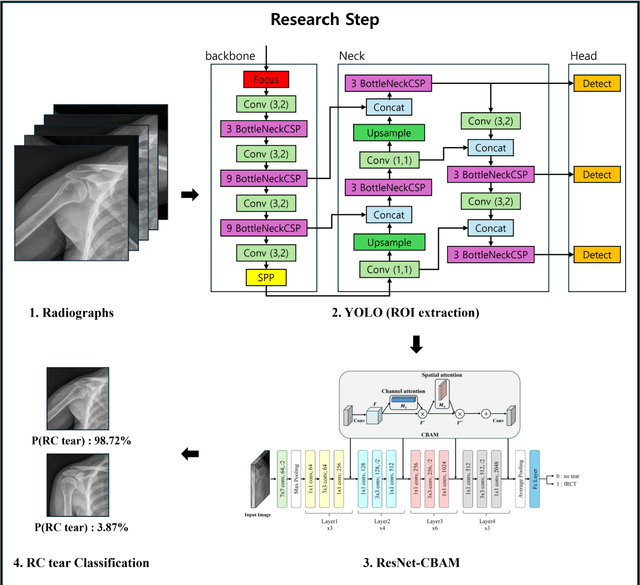Hackjoon Shim
Preoperative Rotator Cuff Tear Prediction from Shoulder Radiographs using a Convolutional Block Attention Module-Integrated Neural Network
Aug 19, 2024



Abstract:Research question: We test whether a plane shoulder radiograph can be used together with deep learning methods to identify patients with rotator cuff tears as opposed to using an MRI in standard of care. Findings: By integrating convolutional block attention modules into a deep neural network, our model demonstrates high accuracy in detecting patients with rotator cuff tears, achieving an average AUC of 0.889 and an accuracy of 0.831. Meaning: This study validates the efficacy of our deep learning model to accurately detect rotation cuff tears from radiographs, offering a viable pre-assessment or alternative to more expensive imaging techniques such as MRI.
Bayesian approaches for Quantifying Clinicians' Variability in Medical Image Quantification
Jul 06, 2022



Abstract:Medical imaging, including MRI, CT, and Ultrasound, plays a vital role in clinical decisions. Accurate segmentation is essential to measure the structure of interest from the image. However, manual segmentation is highly operator-dependent, which leads to high inter and intra-variability of quantitative measurements. In this paper, we explore the feasibility that Bayesian predictive distribution parameterized by deep neural networks can capture the clinicians' inter-intra variability. By exploring and analyzing recently emerged approximate inference schemes, we evaluate whether approximate Bayesian deep learning with the posterior over segmentations can learn inter-intra rater variability both in segmentation and clinical measurements. The experiments are performed with two different imaging modalities: MRI and ultrasound. We empirically demonstrated that Bayesian predictive distribution parameterized by deep neural networks could approximate the clinicians' inter-intra variability. We show a new perspective in analyzing medical images quantitatively by providing clinical measurement uncertainty.
 Add to Chrome
Add to Chrome Add to Firefox
Add to Firefox Add to Edge
Add to Edge